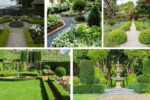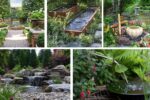Few garden styles are as timeless, inviting, and picturesque as the cottage-style flower bed. Overflowing with colorful blooms, whimsical textures, and a sense of effortless beauty, cottage gardens have enchanted homeowners and visitors alike for centuries. Unlike formal, structured landscapes, cottage-style flower beds are all about creating a natural, romantic atmosphere that feels welcoming rather than rigid.
This article explores how to design, plant, and maintain cottage-style flower beds full of charm. From plant selection and layout tips to seasonal color and maintenance advice, you’ll discover everything needed to create a dreamy space where flowers flourish in abundance.
What Makes a Cottage-Style Flower Bed Unique?
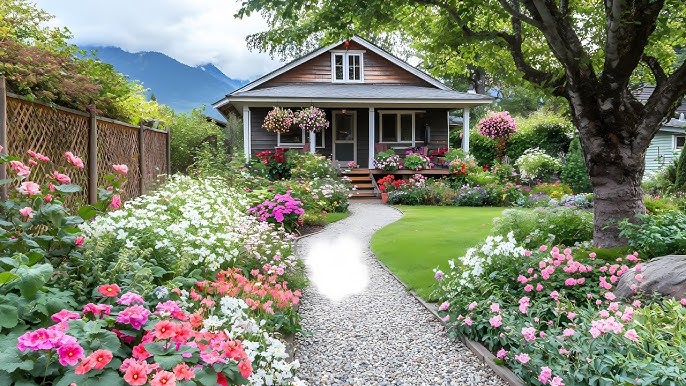
At its heart, the cottage garden reflects simplicity and abundance. Traditionally, it originated in English villages where residents planted practical herbs, vegetables, and flowers together in small yards. Over time, these plantings evolved into lush, informal flower beds celebrated for their beauty and productivity.
Defining Features:
- Abundance and Layers – Cottage beds overflow with flowers of different heights and textures, creating a full, lush look.
- Mix of Ornamentals and Edibles – Flowers often share space with herbs, vegetables, or fruiting plants.
- Romantic Color Palettes – Pastel shades, soft whites, and bursts of jewel tones give beds a painterly effect.
- Curved or Free-Form Shapes – Unlike rigid rectangular beds, cottage beds flow with soft, organic lines.
- Charming Accents – Rustic fences, stone paths, or wooden trellises enhance the cozy aesthetic.
Designing a Cottage-Style Flower Bed
Creating a charming cottage bed requires balancing natural abundance with subtle planning.
1. Choose the Right Location
- Pick a spot that receives at least 6 hours of sunlight, since most cottage flowers thrive in sunny conditions.
- Beds near pathways, entryways, or seating areas maximize enjoyment.
2. Bed Shape and Layout
- Curved borders soften the look and mimic natural growth.
- Irregular outlines work better than straight lines.
- Layer plants by height: tallest at the back, medium in the middle, and shorter flowers at the front.
3. Planting Density
- Cottage beds look best when densely planted. Leave little bare soil.
- Use interplanting: tuck herbs like lavender among roses, or scatter foxgloves between perennials.
4. Incorporate Structures
- Add trellises, arbors, or rustic fences for climbing roses and sweet peas.
- Stone edging or weathered wooden borders complete the nostalgic look.
Best Plants for Cottage-Style Flower Beds
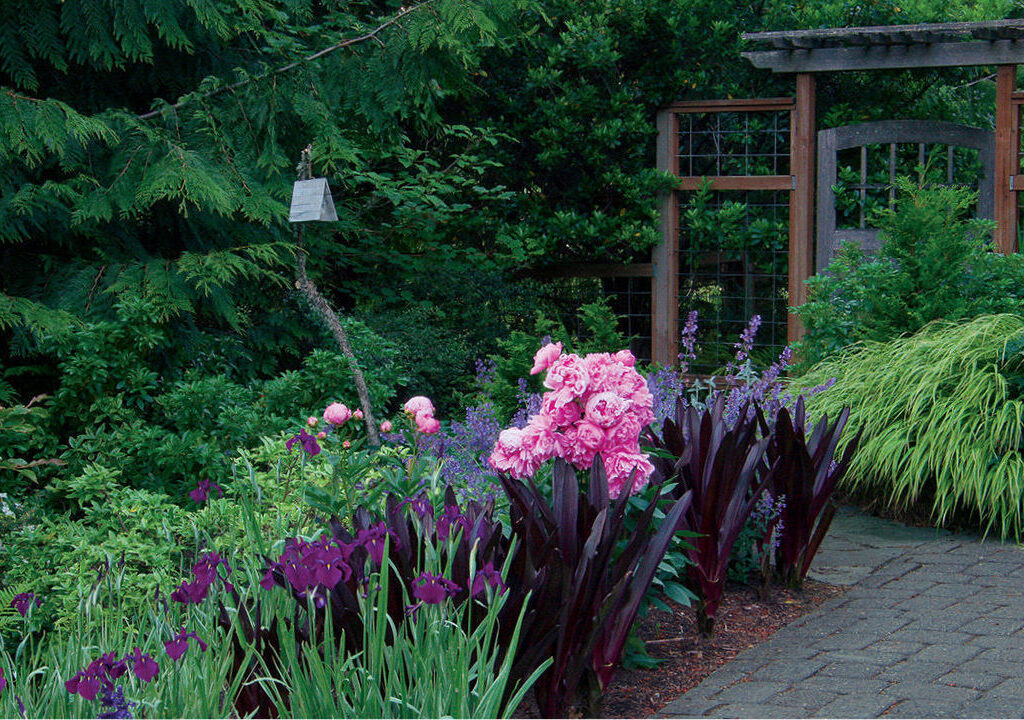
A true cottage bed thrives on variety. Combine perennials, annuals, climbers, and herbs for year-round charm.
Classic Cottage Flowers
- Roses (especially old-fashioned or climbing varieties).
- Foxgloves – Tall spires add vertical drama.
- Delphiniums – Striking blues and purples.
- Peonies – Romantic blooms with fragrance.
- Daisies and Coneflowers – Cheerful mid-height fillers.
- Hollyhocks – Towering cottage staples at the back of beds.
Fragrant Additions
- Lavender – Provides both beauty and scent.
- Sweet Peas – Climbing and colorful.
- Phlox – Long-lasting fragrance and color.
Herbs and Edibles
- Thyme, Sage, Oregano – Fill gaps with edible greenery.
- Strawberries – Pretty groundcover with sweet rewards.
- Chives – Purple flower heads add charm and utility.
Climbers
- Clematis – Adds elegance on trellises.
- Morning Glory – Vibrant colors for rustic fences.
- Wisteria – Cascading purple blooms for a dramatic effect.
Color Schemes for Cottage Charm
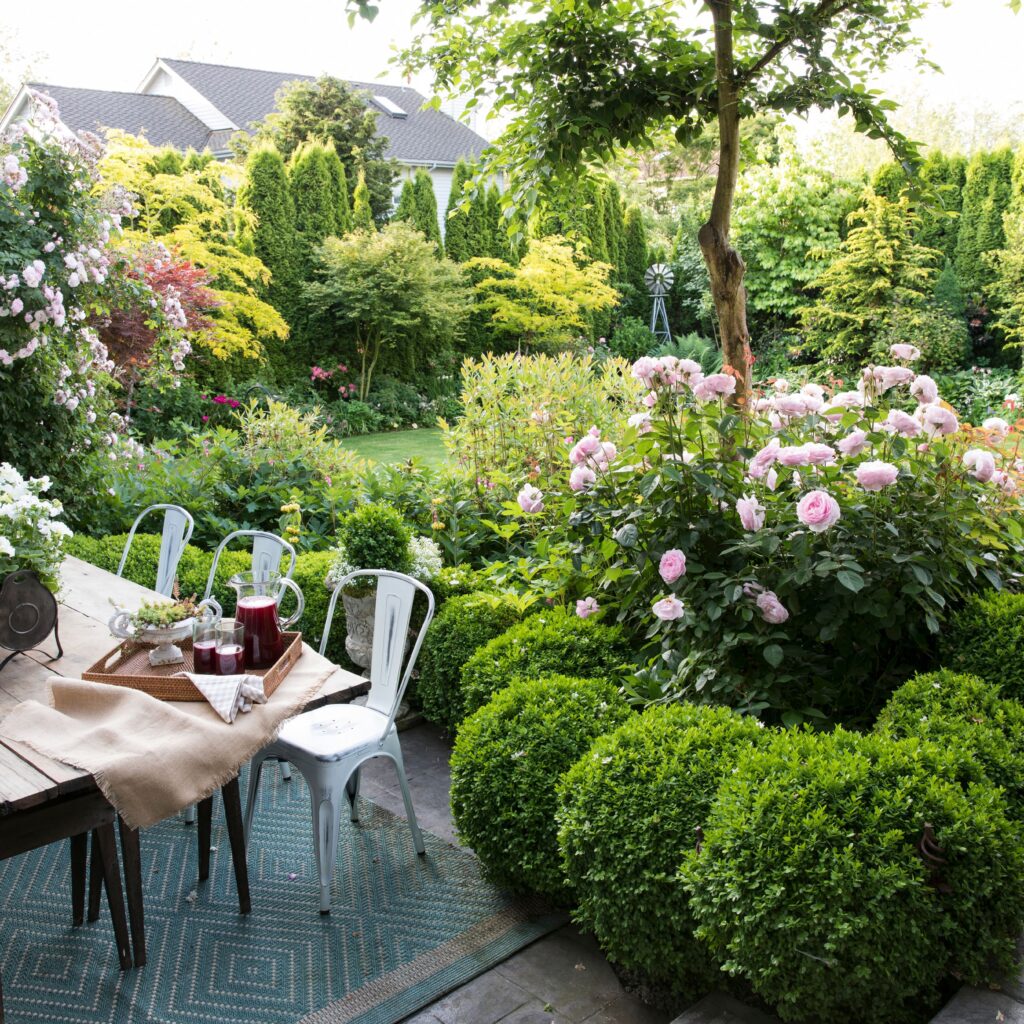
Soft Romantic Palette
- Whites, pinks, lavenders, and pale blues.
- Ideal for creating a dreamy, romantic mood.
Bold Jewel Tones
- Rich reds, deep purples, and bright oranges.
- Adds vibrancy and energy to the garden.
Mixed Wildflower Look
- Scatter seeds of poppies, cornflowers, and cosmos.
- Creates a casual, natural meadow effect within the bed.
Seasonal Interest in Cottage Beds
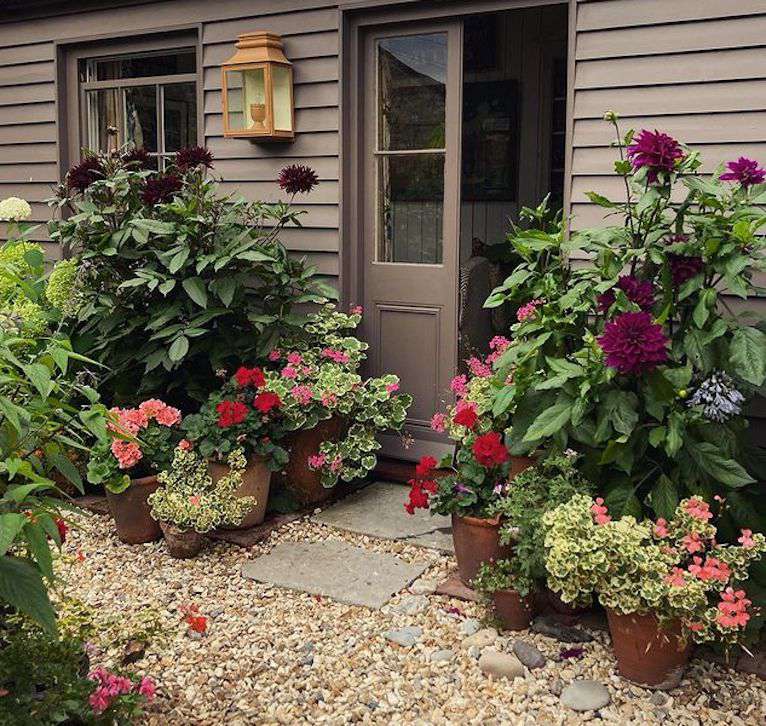
A hallmark of cottage gardens is continuous bloom. To achieve this, select plants that flower across all seasons.
Spring
- Tulips, daffodils, and bleeding hearts bring early color.
- Lilacs add fragrance and charm.
Summer
- Roses, delphiniums, lavender, and daisies dominate.
- Hollyhocks and foxgloves tower at the back.
Autumn
- Asters, chrysanthemums, and ornamental grasses extend color late into the season.
- Sedum adds texture and late nectar for pollinators.
Winter
- Evergreen herbs like rosemary and sage hold structure.
- Hellebores bloom even in cold weather.
Tips for Creating Authentic Cottage-Style Beds
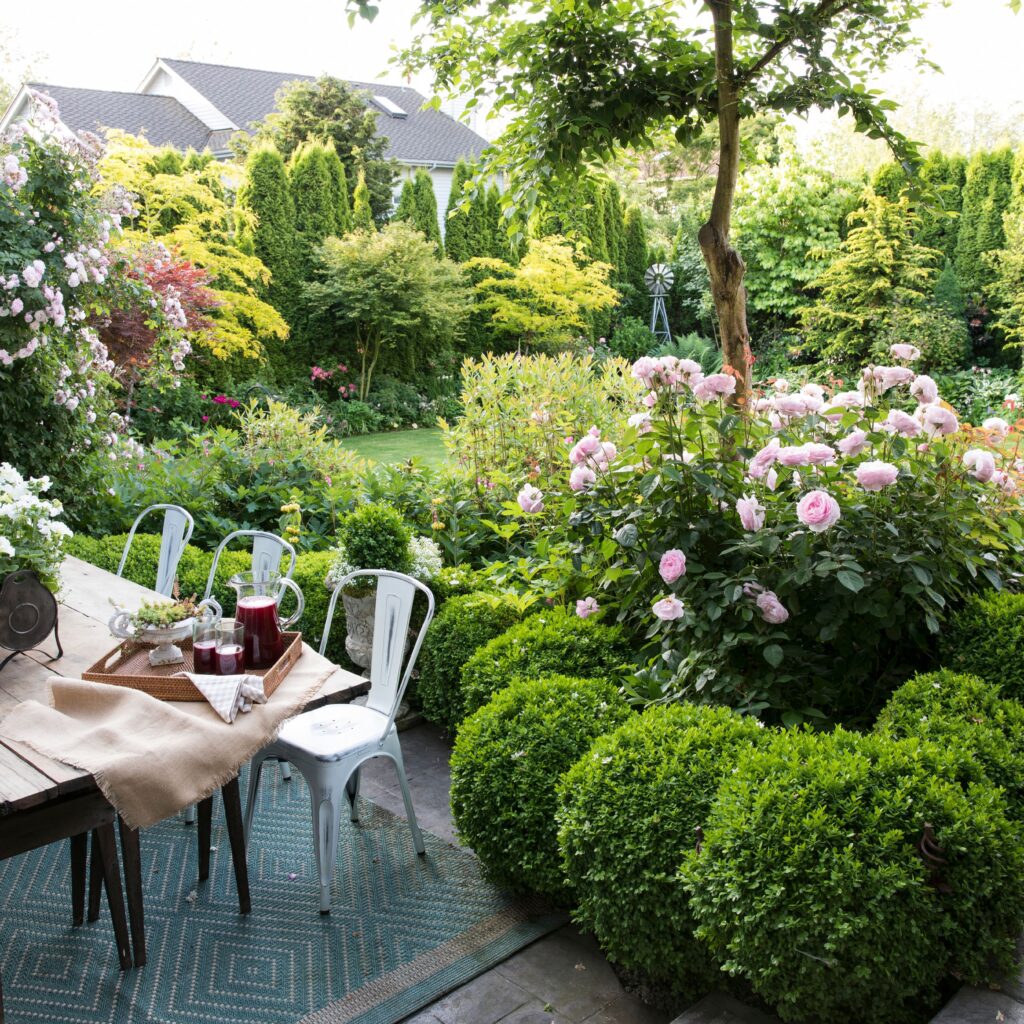
- Plant in Groups
Cluster flowers in odd numbers (3, 5, or 7) for natural flow. - Mix Textures
Combine spiky blooms (like foxgloves) with rounded flowers (roses or peonies). - Encourage Self-Seeding
Let annuals like cosmos or poppies self-sow for a spontaneous look. - Include Wildlife-Friendly Plants
Plant nectar-rich flowers to attract bees, butterflies, and birds. - Add Rustic Features
Weathered wood benches, stone paths, or vintage watering cans make charming focal points.
Maintenance of Cottage-Style Flower Beds
While they may look wild and natural, cottage beds still need attention to thrive.
1. Watering
- Most cottage flowers need consistent moisture but dislike waterlogging.
- Soaker hoses or drip irrigation systems work best.
2. Deadheading
- Regularly remove spent blooms to encourage fresh flowers.
3. Pruning
- Cut back climbers and tall perennials after flowering.
- Keep roses tidy with annual pruning.
4. Fertilizing
- Use compost or organic fertilizer to enrich soil.
- Many cottage flowers thrive in slightly fertile, well-drained soil.
5. Pest and Disease Management
- Encourage natural predators (ladybugs, birds).
- Avoid heavy chemicals to maintain pollinator-friendly beds.
Example Layouts for Cottage Flower Beds
Layout 1: Traditional English Bed
- Back: Hollyhocks, delphiniums, climbing roses.
- Middle: Lavender, peonies, daisies.
- Front: Thyme, chives, creeping phlox.
Layout 2: Cottage Bed by a Fence
- Trellis with sweet peas and clematis.
- Base planting of foxgloves and roses.
- Edging with strawberries and low herbs.
Layout 3: Informal Corner Bed
- Layered planting of hydrangeas, daisies, and coneflowers.
- Scattered annuals (cosmos, zinnias).
- Stone border with creeping thyme.
Common Mistakes to Avoid
- Over-Structuring the Bed
Cottage beds should look natural, not rigid. - Ignoring Plant Growth
Some plants like hollyhocks can overshadow smaller companions if not planned properly. - Skipping Maintenance
Without deadheading or pruning, beds can quickly look messy. - Neglecting Soil Prep
Even informal gardens need rich, well-draining soil for healthy blooms.
Conclusion
Cottage-style flower beds are more than just plantings—they are living works of art that celebrate abundance, romance, and charm. By combining a diverse range of flowers, herbs, and climbers in an informal, overflowing arrangement, you can recreate the magic of old English gardens in your own outdoor space.
With thoughtful planning, continuous seasonal interest, and a touch of rustic charm, cottage beds transform gardens into places of beauty, nostalgia, and warmth. They invite you to linger, breathe in the fragrance of lavender and roses, and admire the buzzing life they attract.
Creating your own cottage-style flower bed means embracing both nature’s wildness and your personal creativity—a combination that ensures your garden will always feel magical and full of charm.

